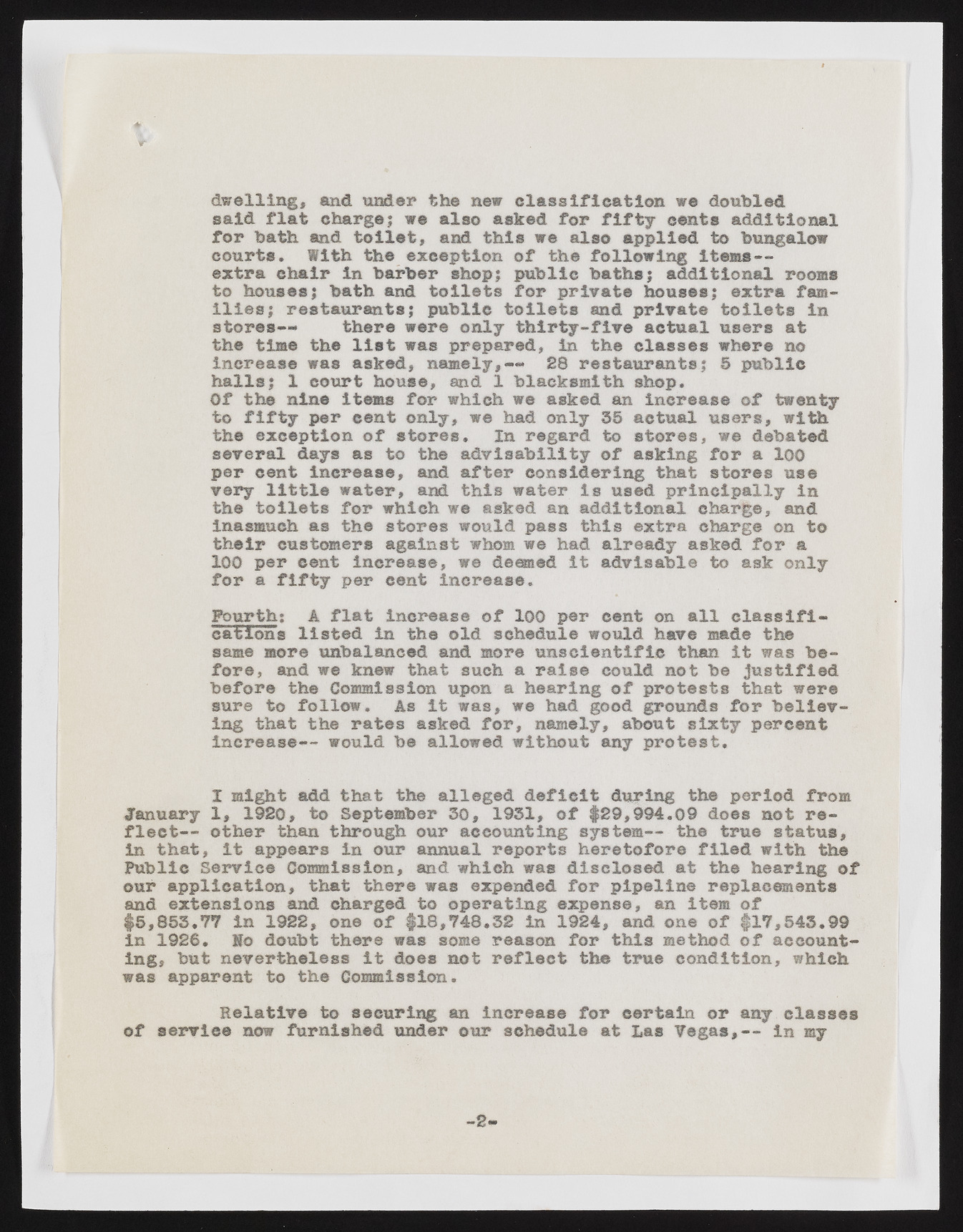Copyright & Fair-use Agreement
UNLV Special Collections provides copies of materials to facilitate private study, scholarship, or research. Material not in the public domain may be used according to fair use of copyrighted materials as defined by copyright law. Please cite us.
Please note that UNLV may not own the copyright to these materials and cannot provide permission to publish or distribute materials when UNLV is not the copyright holder. The user is solely responsible for determining the copyright status of materials and obtaining permission to use material from the copyright holder and for determining whether any permissions relating to any other rights are necessary for the intended use, and for obtaining all required permissions beyond that allowed by fair use.
Read more about our reproduction and use policy.
I agree.Information
Digital ID
Permalink
Details
More Info
Rights
Digital Provenance
Publisher
Transcription
r dwelling, and under the new classif1cation we doubled said flat charge; we also asked for fifty cents additional for hath and toilet, and this we also applied to bungalow courts. With the exception of the following items-- extra chair in barber shop; public baths; additional rooms to houses; bath and toilets for private houses; extra families; restaurants; publie toilets and private toilets in stores— there were only thirty-five actual users at the time the list was prepared, in the classes where no increase was asked, namely,— 28 restaurants; 5 public halls; 1 court house, and 1 blacksmith shop. Of the nine items for which we asked an increase of twenty to fifty per cent only, we had only 35 actual users, with the exception of stores. In regard to stores, we debated several days as to the advisability of asking for a 100 per cent increase, and after considering that stores use very little water, and this water is used principally in the toilets for which we asked an additional charge, and inasmuch as the stores would pass this extra charge on to their customers against whom we had already asked for a 100 per cent increase, we deemed it advisable to ask only for a fifty per cent increase. Fourth: A flat Increase of 100 per cent on all classifications listed in the old schedule would have made the same more unbalanced and more unscientific than it was before, and we knew that such a raise could not be justified before the Commission upon a hearing of protests that were sure to follow. As it was, we had good grounds for believing that the rates asked for, namely, about sixty percent increase— would be allowed without any protest. I might add that the alleged deficit during the period from January 1, 1920, to September 30, 1931, of #29,994.09 does not reflect— other than through our accounting system-- the true status, in that, it appears in our annual reports heretofore filed with the Public Service Commission, and which was disclosed at the hearing of our application, that there was expended for pipeline replacements and extensions and charged to operating expense, an item of #5 ,853.77 in 1922, one of #18,748.32 in 1924, and one of #17,543.99 in 1926. Ho doubt there was some reason for this method of accounting, but nevertheless it does not reflect the true condition, which was apparent to the Commission. Relative to securing an increase for certain or any classes of service now furnished under our schedule at Las Vegas,-- in my -2

